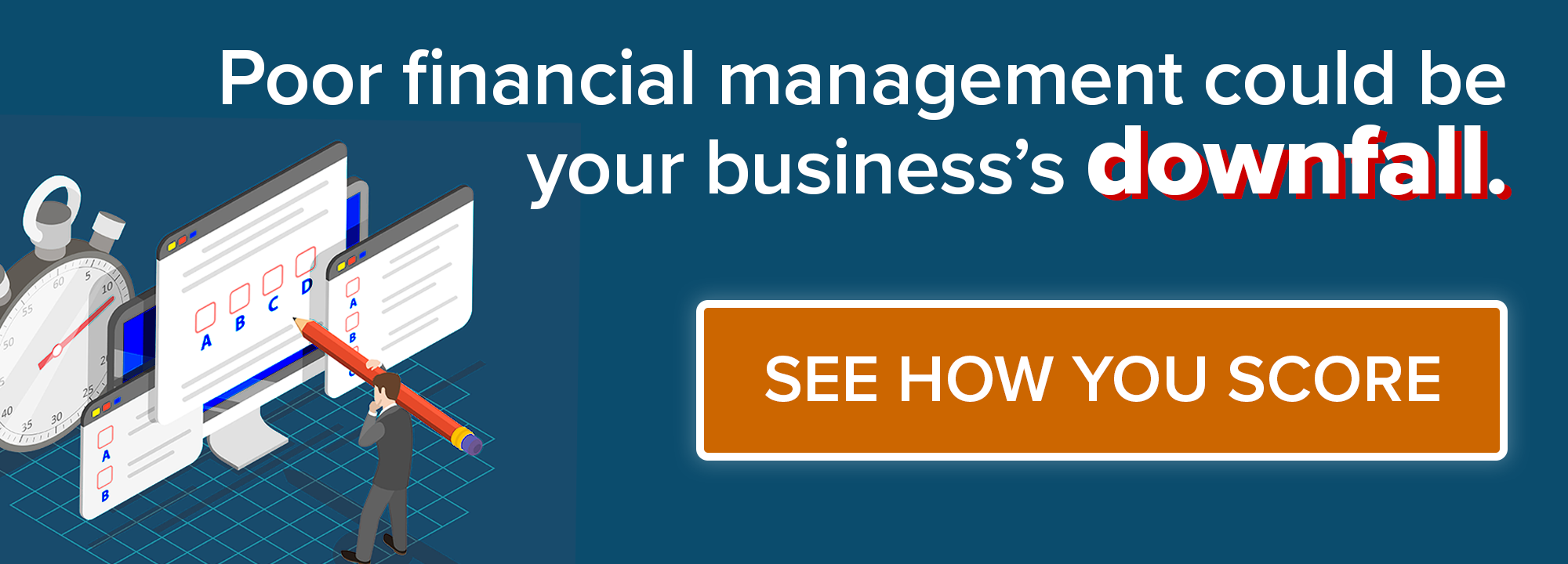6 min read

You've hit 7-figures in your consulting firm — a major milestone! As your consulting firm stands now, you're only able to do so much with the resources you currently have built into your business model.
|
Key Takeaways
|
When you reach the point at which you're unable to be any more productive without adding hours to the day, it's time to think about a new strategy for increasing the ROI of every hour to grow your consulting business.
If you want to add value to your business, with continued growth and increased profitability, you’re going to need to scale. After all, eventually, you may consider selling– and unless you’re smart about how you are managing it right now at this stage– it will be harder to make it sustainably scalable now, and in the future, saleable then.
In consulting, scaling means finding ways to differentiate, optimize, and use your financial data to strategically adjust your business model so that you're able to do more than the hours in the day currently allow.
3 Strategies to Help You Scale Your Consulting Business
1. Choose a New Consulting Business Model
If you're recently established (within 1-3 years), you've likely reached the point where you have to choose between whether you spend time helping clients, thinking strategically about your business growth and planning, or managing everything else that's involved in just running your business.
To do more with the same number of hours in the day, you need a new approach to your business. This often means choosing a new model (and a new strategy) for your consulting business that squeezes every second from each hour and frees up your time to go after more clients while you continue running your business. [1]
The Firm Model
The first business model is the firm. This is probably the most traditional consulting business model. It's simple to scale and fairly simple to design since it's been done many times before.
Starting a firm involves hiring additional consultants to operate under your direction, allowing you to take on more clients. These consultants work with clients and complete projects while your business takes a percentage of what they earn.
You'll likely also hire or outsource the following people: an office manager, a human resources manager, a marketer, an accountant, a lawyer, and a financial advisor.
When starting a firm, your responsibilities will shift from working closely with clients to bringing in more clients, overseeing day-to-day operations, and making data-driven decisions to improve operations and grow your business.
The Customized Model
The Customized consulting business model requires you to customize your services so that you're offering a high-value, white-glove service in a niche that you know very well. Your expert industry knowledge will allow you to charge more for the services you offer in addition to the high level of personalization you'll offer when working individually, one-on-one with each of your clients.
In a customized model, it's important to remember that you'll continue to be operating independently, which means you'll still bear the brunt of both leading and operating your business.
As a result, this type of consulting business model requires you to carefully select your clients, choosing to work with only the most profitable. Additionally, you'll need to pay close attention to your pricing and rates to ensure you're charging enough to scale your business without hiring more consultants and becoming a firm.
The Productized Model
The productized consulting business model is one way to multiply your reach so that you (or at least your expertise) can be in more than one place at a time, helping several clients at once.
With the productized model, you put a price on your knowledge, package it, market it, and sell it. Productized consulting often comes in the form of books, courses, training programs, coaching programs, events and seminars, subscriptions, and other informational products.
With this model, your focus will shift from working one-on-one with clients to producing these saleable materials, branding your consulting business, and marketing your business and informational products effectively.
With a productized consulting business model, you effectively transform your business from a service-based business to a product-based business (or a combination of the two). As a result, you'll need to change the way you think about operations, goals, and growth.
2. Developing Standard Operating Procedures (& A Solid Financial Foundation)
Take the time to sit down, list the tasks you must carry out for your business to remain operational, and then write down the process you go through to complete each of those tasks.
This process is called developing standard operating procedures (SOP), and it's necessary if you want to streamline your onboarding and training process, in addition to facilitating automation wherever it's feasible.
Developing a set of SOPs will save you time and money in the long run because you'll spend less time training employees, simplify task delegation, identify redundancies in your procedures, and be able to apply the right tools and technology to automate all processes that can be automated.
During the early stages, many consulting business owners make the mistake of handling the entire back-office function in order to maximize dollars put toward growing the business. This is a fast track to folding. Investing a little money to establish a solid financial foundation is the key to long-term business success.
From the start, you should have a smart back office in place that will help you anticipate future problems, plan for future growth, and which will continue to function and meet your business's needs for the long haul.
How a Scalable Back Office Jump-Started This Company from Start-Up to 8-Figures
3. Maximizing ROI on Time
In a service-based business, getting the biggest ROI on your largest expense (your people) is extremely important. The best place to begin maximizing profitability in your people is to value and prioritize tasks before delegating them or taking them on yourself.
Some tasks in your business are considered high value. These are tasks that bring in lots of money in a short amount of time. For example, securing a phone call with and landing a new client would be considered a high-value task. Whereas sending invoices or conducting research – although necessary for business operations – are lower-value tasks.
To successfully lead a consulting business and maximize profitability in your people (even if your people are just you and an assistant), you must make a list of the tasks performed in your business and then rank them from most to least valuable.
This might include sales calls, writing, speaking, research, conducting interviews, generating proposals, invoicing, paying bills, and marketing.
Make sure you and your higher-paid employees focus on the high-value tasks (those that generate the most revenue) while employees earning less are responsible for lower-value tasks (those that are necessary but don't necessarily bring in any money).
Otherwise, you could be paying yourself or another high-level employee an exorbitant rate to carry out menial work, leading to negative ROI.
💡 One very important (and often overlooked step)- make sure your back office is set up to seamlessly measure and track your progress. If you aren’t monitoring this closely, then you won't know if you’re getting the best ROI on your people. While business leaders need to keep an eye on a variety of financial reports, trends, and key performance indicators (KPIs), there are some that can be used specifically to track the progress of your human capital strategy. (You find more about those 👉 here)
Evaluate Your Growth Strategy With an Automated Back Office and Financial Reports
Whether you are adjusting your business strategy with growth, stronger profit margins, or another goal in mind, the only way to measure the strategy's success is with a robust back office that has tools, technology, and processes in place that have been designed to bring your financial data to your fingertips.
No matter which consulting business model you choose for your firm (or what lifecycle stage you are in), with an automated back office, you can easily track employees' billable hours, time spent on high-value tasks, optimize your product pricing, and use job costing to identify the most profitable clients (or products in a productized model) to continuously improve your growth strategy and continue scaling your consulting business.

.png?width=563&height=144&name=New%20GF%20Logo%20(37).png)

